Early in the morning I started from Puente la Reina and as soon as I crossed the bridge I had to stop and look back one more time. Everything was quiet and still, as may be expected at dawn.
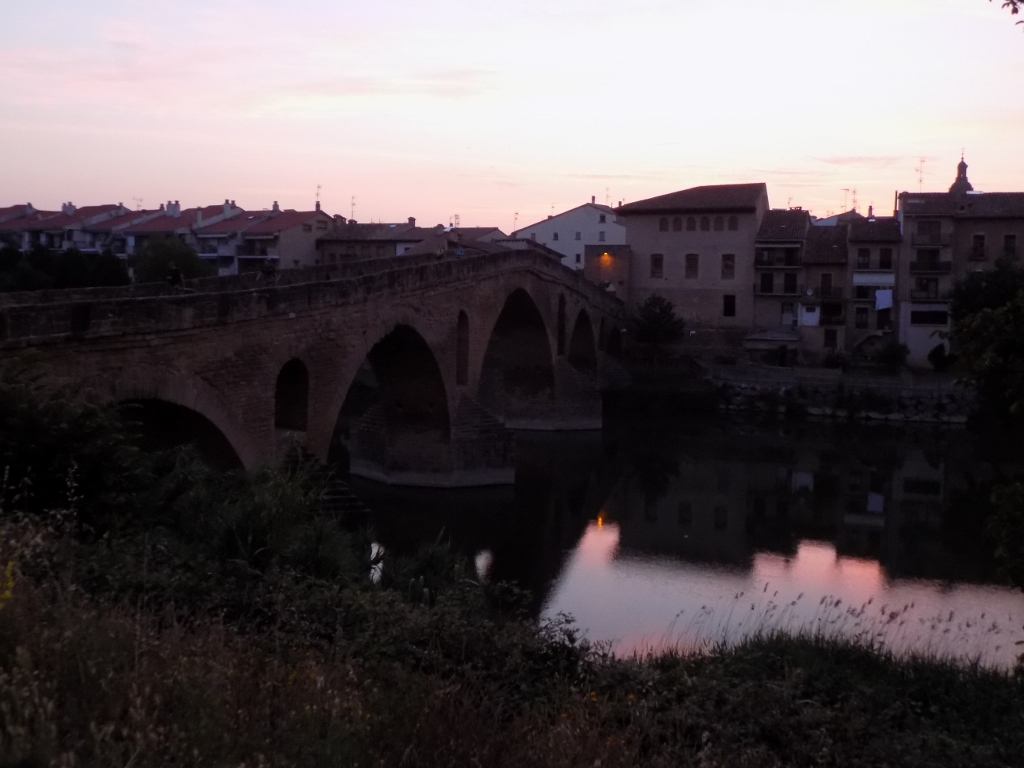 Puente Románico in Puente la Reina
Puente Románico in Puente la Reina
Very soon it became more than apparent that a significantly more popular French Route goes along this way since I encountered many more people than at the Aragonese Route where it may happen quite easily even in the middle of the summer season (June) that you do not see anybody during an entire day.
The sun was still not up and I was already well out of settlements, albeit not out of civilisation. The fields were well cultivated and vineyards also started to appear.
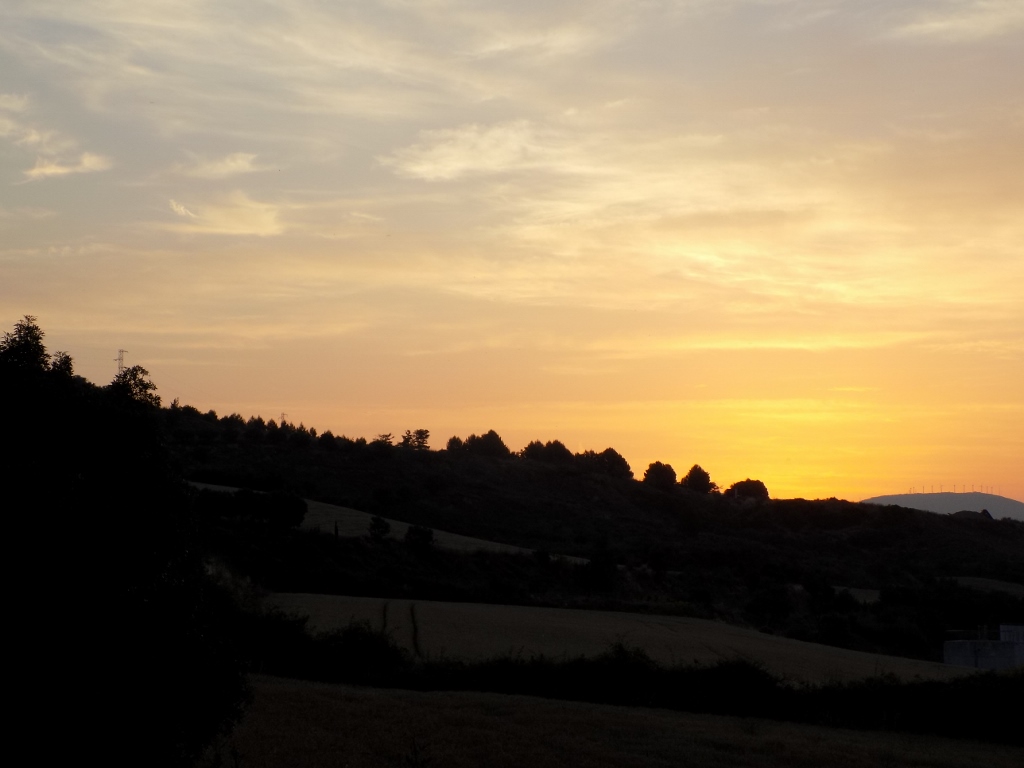 The Sun is getting ready to pop up
The Sun is getting ready to pop up
Less than 5 km after Puente la Reina one already passes through the first village, Mañeru, which seemed quite unusual after the experiences along the Aragonese Route where the settlements are distributed more sparsely or the Way does not lead through all of them, but this early in the morning the bars were not open yet. On the other hand, there is not much point in stopping in each one of them since then one will never reach the final destination, i.e., Santiago de Compostela. In fact, this may even be quite a good idea, but it was not what I wanted this time.
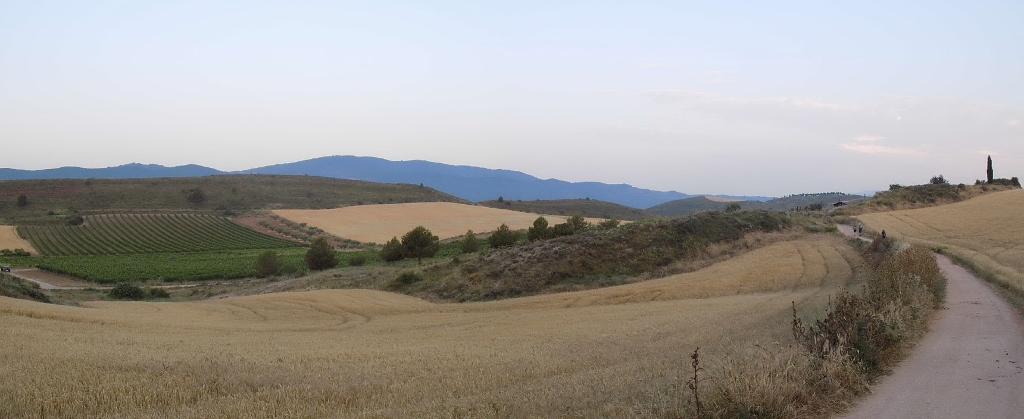 The Way through the autonomous community Navarre after Mañeru
The Way through the autonomous community Navarre after Mañeru
Towards the west there were still quite a few clouds, but on the east side of the firmament the sun had started to pass through.
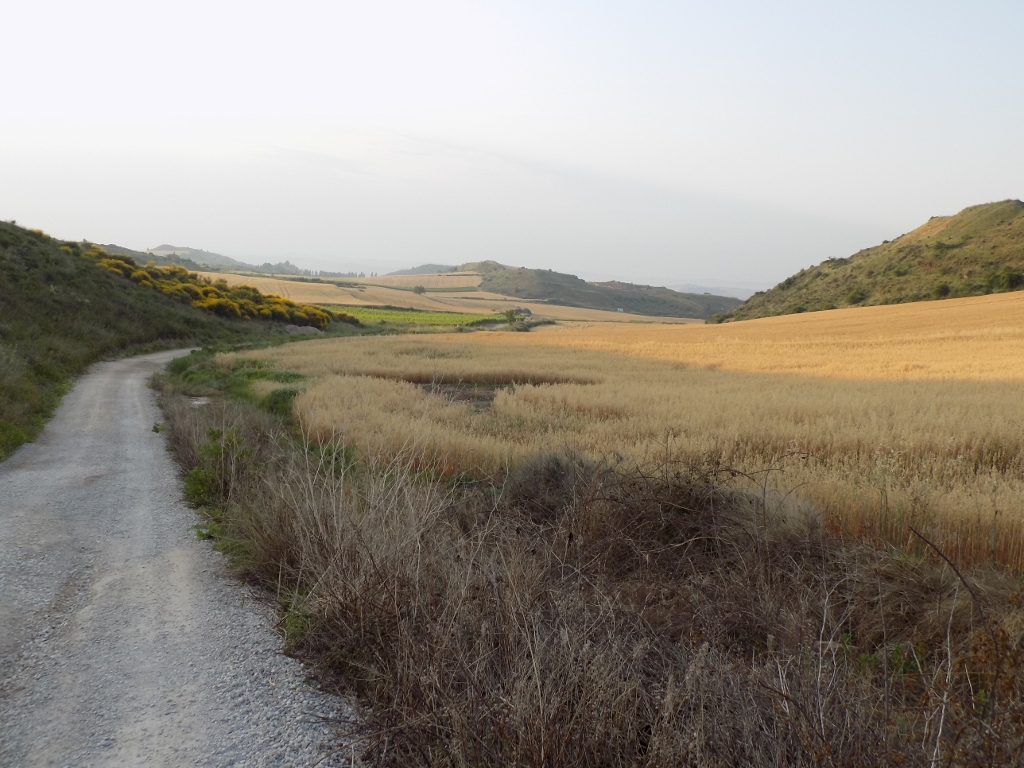 The Way I have already walked
The Way I have already walked
A few kilometres farther I could see the village of Cirauqui on the top of a hill. The Way was leading through this place.
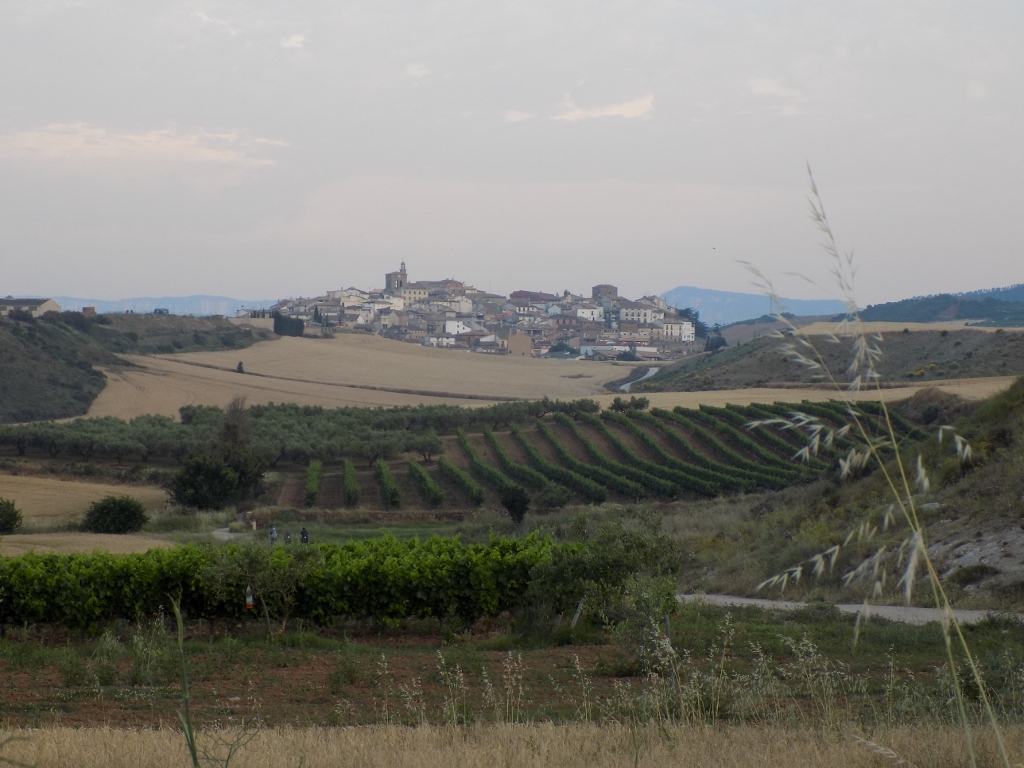 Getting close to Cirauqui
Getting close to Cirauqui
Of course, when I say that a path leads over a hill, this means that first you go up and then you go down, which is not pleasant at all for the already aching feet. Once you leave Cirauqui, the Way goes over an old Roman bridge. I have already mentioned the ancient Romans and their roads. These roads also meant a lot of stone bridges and a large number of them have survived to the present-days, of course with certain maintenance.
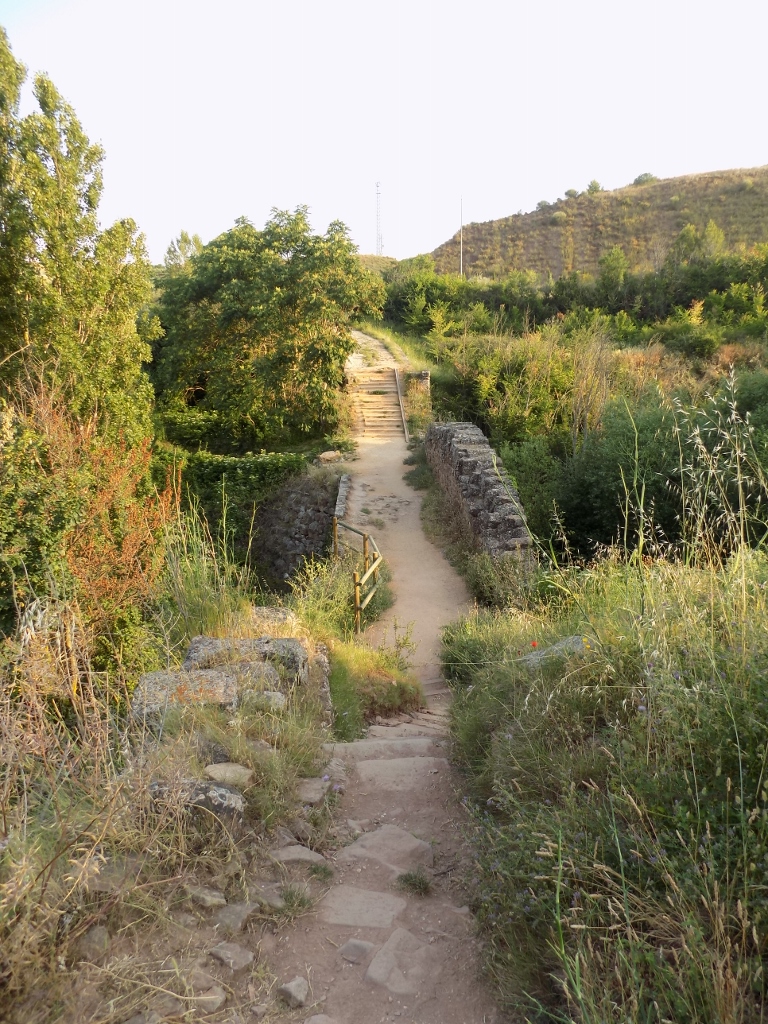 Roman bridge close to the village of Cirauqui
Roman bridge close to the village of Cirauqui
In the meantime, the sun has won its battle with the clouds, taking over the sky fully and all one had to do was to go forward.
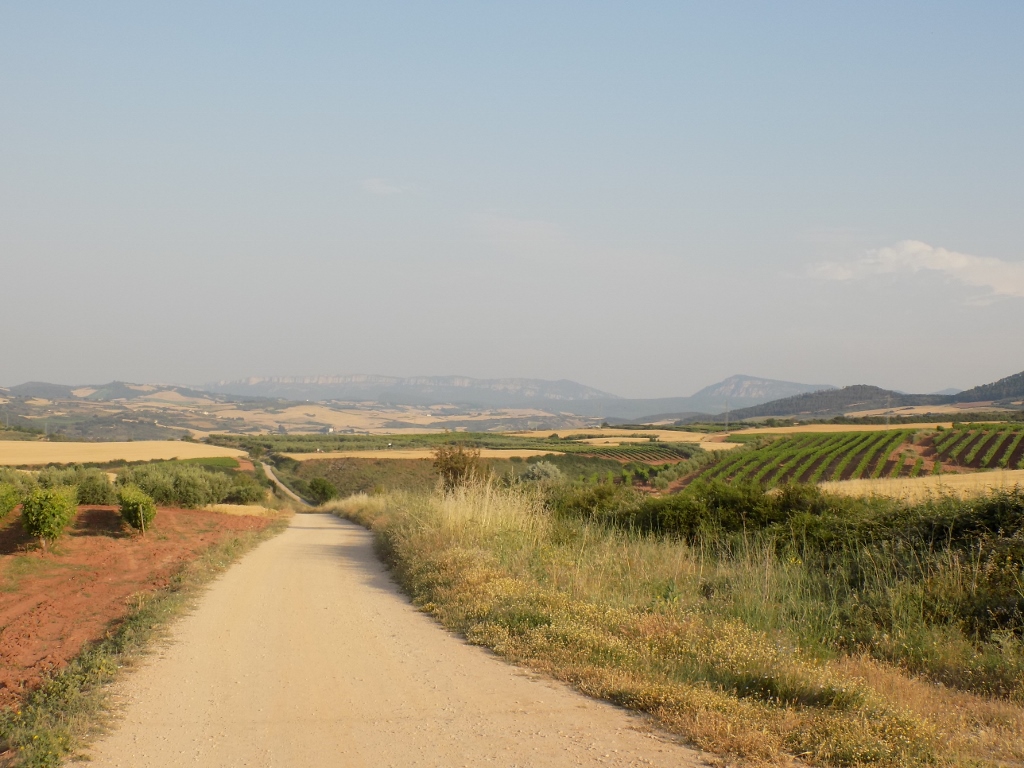 Landscapes after Cirauqui
Landscapes after Cirauqui
Then I covered a section of almost 6 km to the village of Lorca where I took advantage of the presence of a drinking fountain in order to fill up my water bottle, thus replenishing my supply. This was when I could see again that during the morning smaller places I was going through seemed rather deserted.
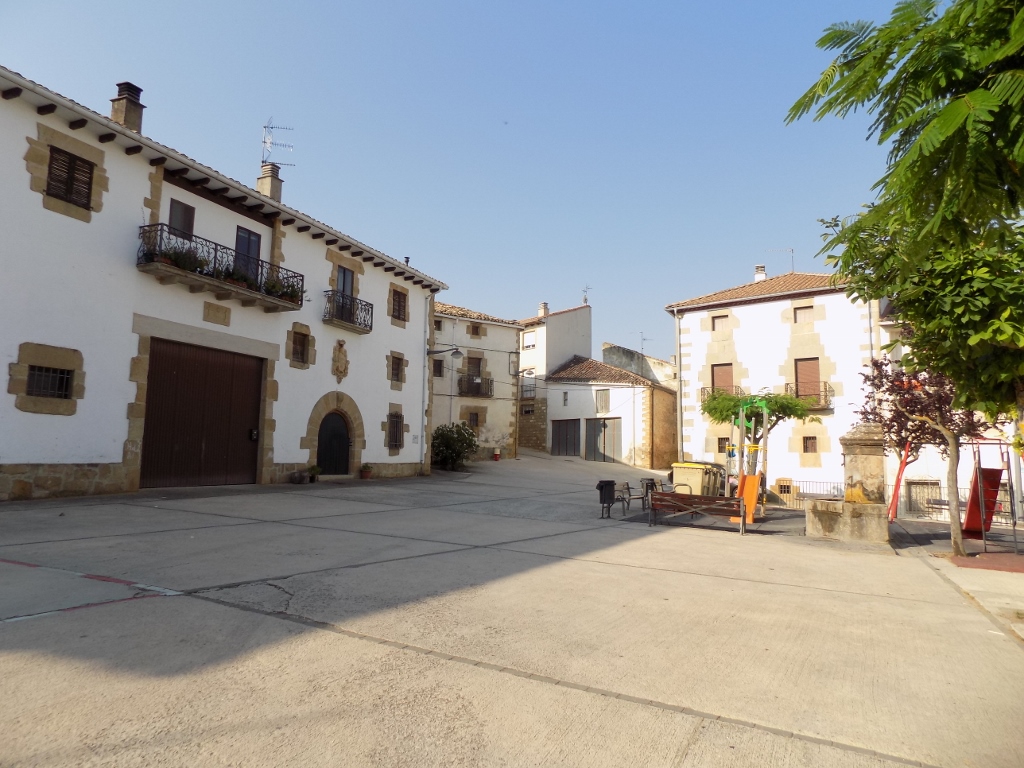 Lorca
Lorca
As I continued, I could enjoy the beauty of the landscapes around me, but at the same time I started to feel an almost constant pain at the bottom of my left shin, close to the ankle. First I felt it on the side and I thought perhaps it was my hiking boot constantly pressing on that spot (although it actually didn’t), but then the pain moved to the front part of the leg.
 Beautiful landscapes between Lorca and Villatuerta
Beautiful landscapes between Lorca and Villatuerta
So, when I got to Villatuerta, the first thing I did was to stop at a pharmacy where I bought some more medical adhesive plaster and sterile gauze for the blisters, but I also asked them if they had something I could put on my aching leg, explaining where I felt the pain. They recommended (sold) me something that later turned out to be completely unusable for the type of pain I felt. Never mind. I guess pharmacists also need to live and earn money.
When leaving Villatuerta, one passes by the Church of the Assumption (Iglesia de la Asunción) and there I enjoyed having a brief respite in the shade that I found in the courtyard.
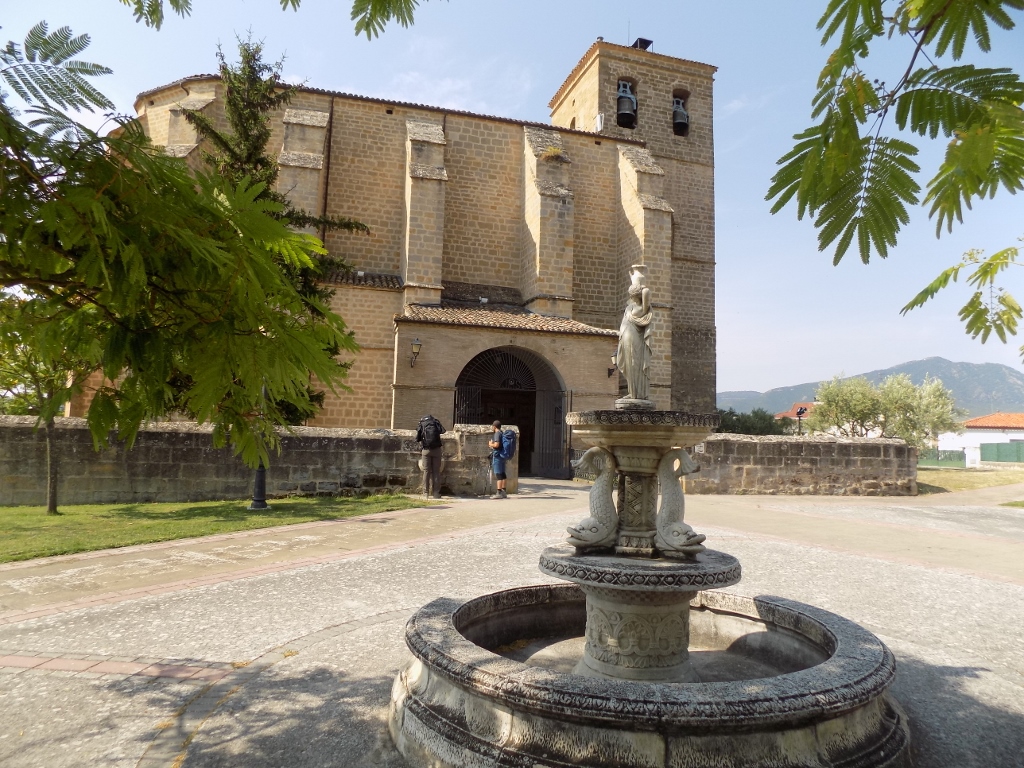 Church of the Assumption
Church of the Assumption
In order to reach Estella, the next place on the Way, there is only less than 4 km, but it seemed to me there was no end to my walking. Regardless of the water I was taking along the way, I felt dehydrated. During my walk, I passed close to Ermita San Miguel built at the end of the 10th century, but there was no chance I would get off my path in order to see it from up close.
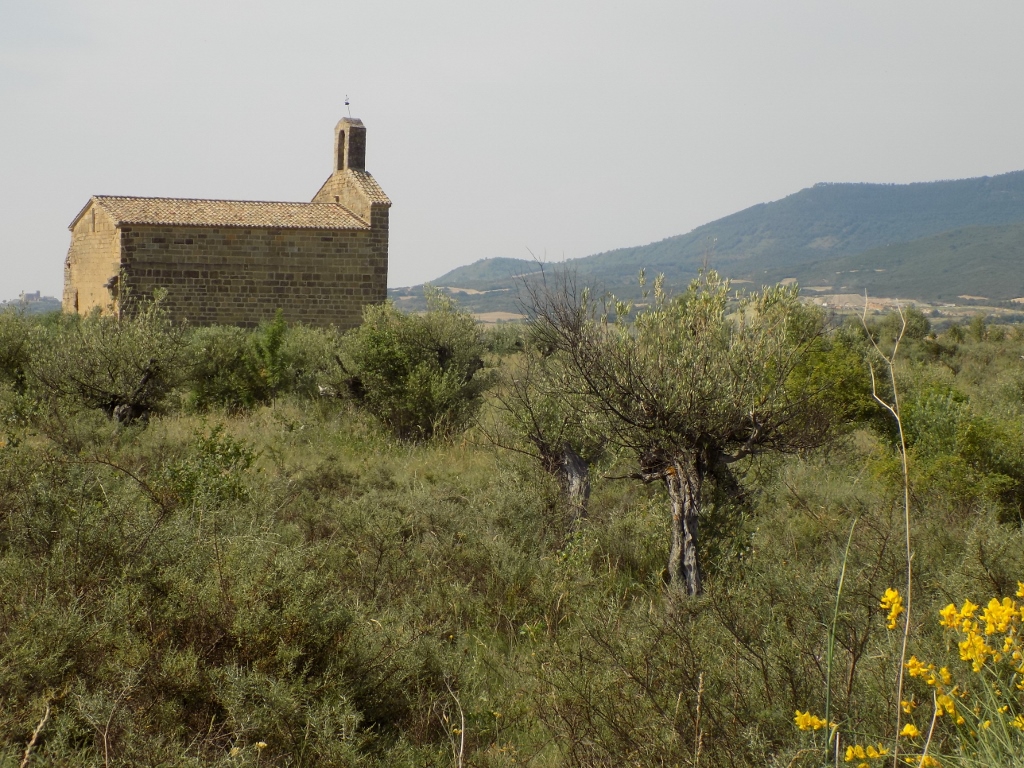 Ermita San Miguel
Ermita San Miguel
After the pleasantly fresh morning, the temperature was going up, as well as the feeling of tiredness. Enough for me to be quite ready to sit somewhere and have a break once I reached Estella. I even went into a café, but there was a rather loud group already sitting there and I realised that after the quietness I had had on the Way until that moment and the exhaustion I felt I was not ready to be exposed to noise as well. So, I picked up my things and slowly continued to walk, stopping for some refreshment later on when I was about to leave Estella.
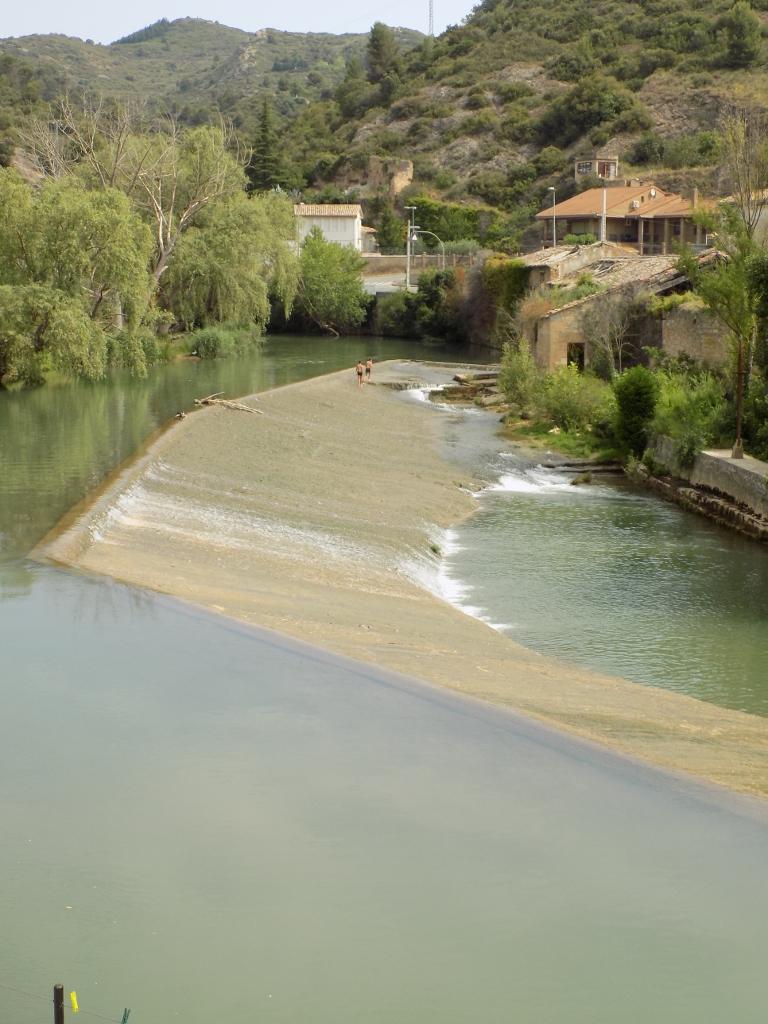 Bathers at the Ega river that passes through Estella
Bathers at the Ega river that passes through Estella
Still, it was quite clear to me that I was going through a very nice place and some of the edifices along the Way are truly impressive. One of them is the Church of the Holy Sepulchre that was started in the second half of the 12th century and was therefore built in the Romanesque style, but later had some additions made which means that today there is a remarkable Gothic portal from the first half of the 14th century.
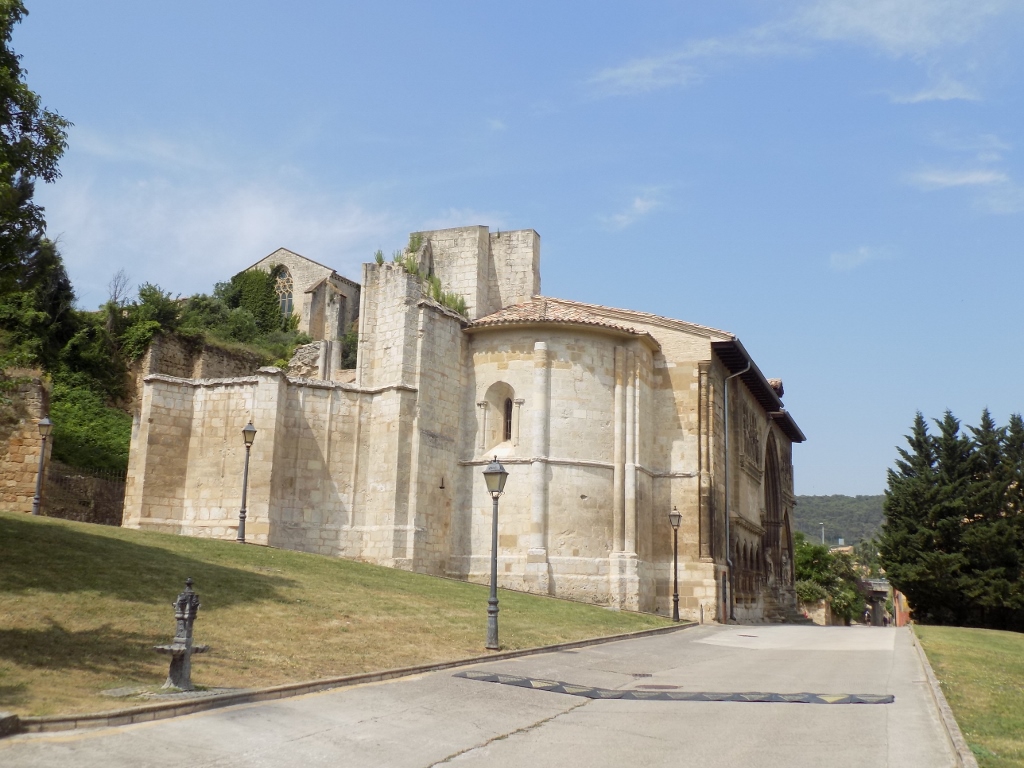 Church of the Holy Sepulchre
Church of the Holy Sepulchre
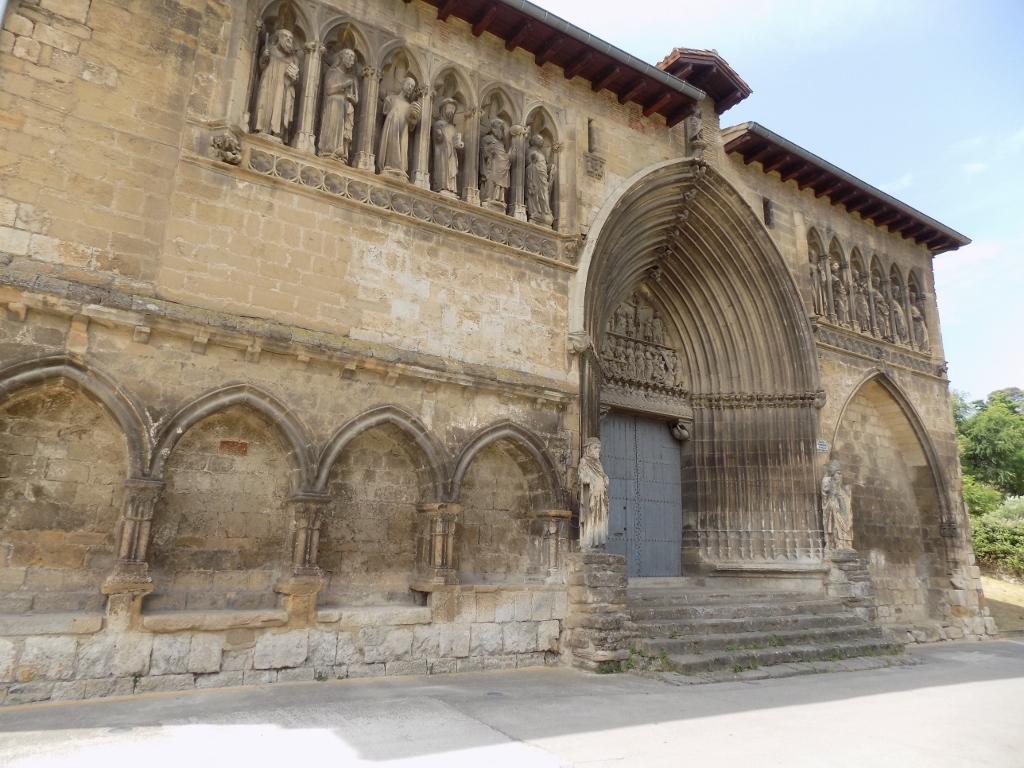 Church of the Holy Sepulchre, the Gothic portal
Church of the Holy Sepulchre, the Gothic portal
Unfortunately, because of my physical state, I was not ready to visit anything and I just kept moving on.
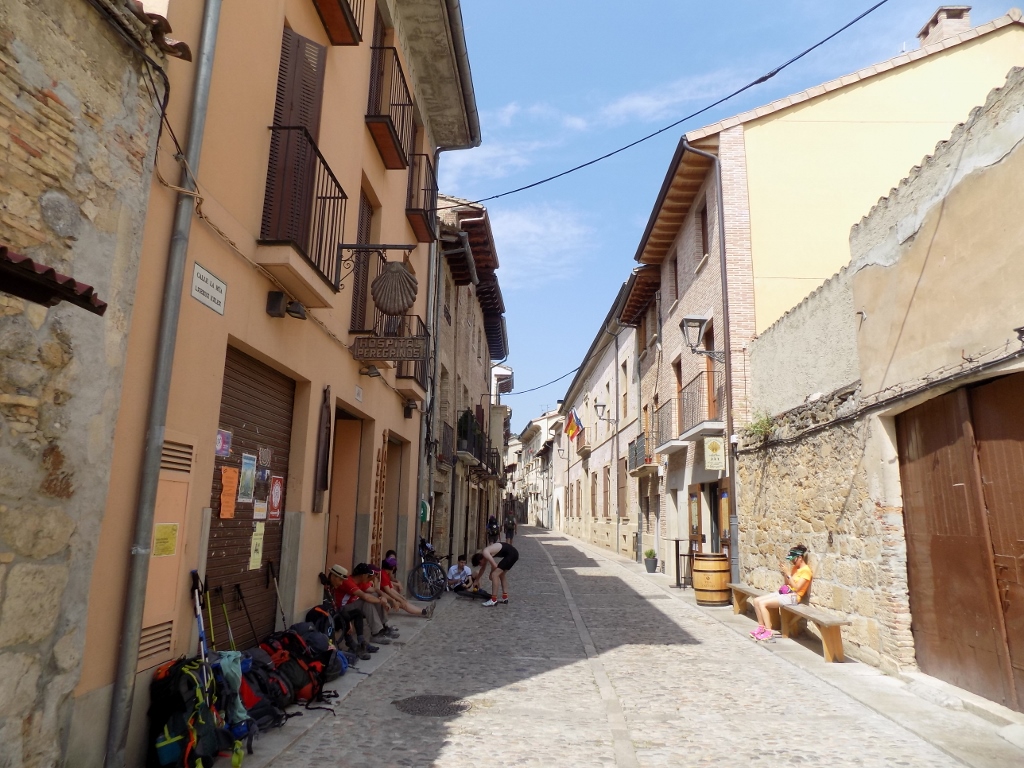 A street in Estella that constitutes the Way here; pilgrims are waiting for the municipal albergue to open
A street in Estella that constitutes the Way here; pilgrims are waiting for the municipal albergue to open
Along the entire Way of St James, one of the most famous and most frequently seen symbols of the Way is a shell. Not just any shell. It is habitual to say that this is a species of scallop, called in Latin Pecten jacobaeus, and it can be seen that its scientific name derives from the name of the saint. However, this is a mistake, because Pecten jacobaeus lives only in the Mediterranean, while the related species of scallop that lives in the Atlantic and is thus qualified to be actually the true symbol of the Way that ends in Galicia, on the shores of the Atlantic, is Pecten maximus, the great scallop. By the way, I’m not being a smart alec here – I’ve learned this from a man who got his PhD on the subject.
There are several legends and stories why a shell and why this particular shell, but my favourite is the one that says that different routes of the Way congregate in Santiago de Compostela, just like the fan-like part of the shell congregates in a single point. Along the Way, one can see numerous metal casts in the form of this shell fixed on the pavements. Here in Estella, I came across the symbol of the Way that adorned metal poles that separate a part of the street for pedestrians.
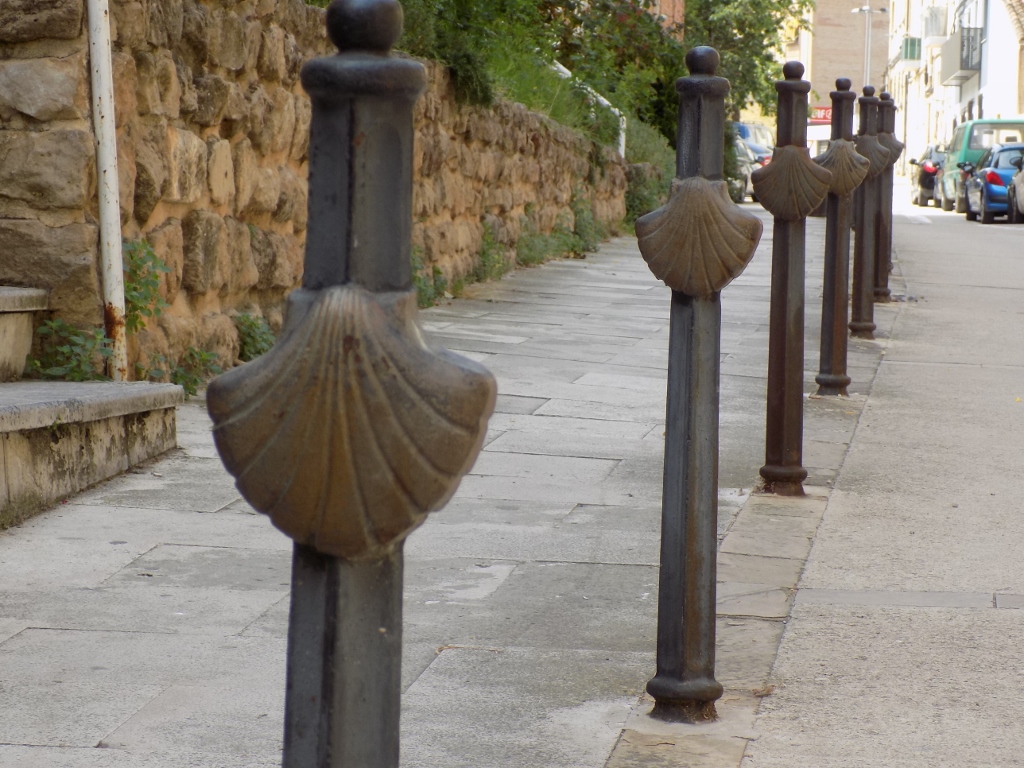 All along the Way it is possible to see one of its symbols – the great scallop
All along the Way it is possible to see one of its symbols – the great scallop
Although the standard stage of the Way in this section ends in Estella, I had already planned earlier to extend it by another 2 km, thus spending the night at the albergue in the place called Ayegui which is the next one along the Way and which actually seems just like an extension of Estella. So, I went uphill where the place is and was impressed by the modern municipal albergue which is out of season used for the training of athletes, since it also includes a sport centre. The price of the accommodation here also included single-use bed linen.
Generally speaking, a lot of people carry along their sleeping bags, but it is also possible in each hostel to buy single-use bed linen that consists of a pillow case and a mattress sheet. Here, however, everybody got it automatically. This bed linen is made of fabric that seems like thinly pressed cotton wool and this time it also included the cover sheet (which is rarely found in the albergues). All beds, of course, include a mattress and a pillow, and most often, although not always, there are also blankets or covers. If they are not already folded on the bed itself, they are placed in some of the lockers around the dormitory.
After the shower and a meal I had at a bar-restaurant that exists within the pilgrims’ hostel in Ayegui I recovered quite well, albeit very slowly. I was mostly resting that afternoon and although Estella was so close, I still wanted to lie in bed as much as possible before continuing with the walking the next day. After all, this was not a usual type of journey for me where I almost always prefer to go sightseeing throughout the entire day.
Here is what I had to say on the social media this day:
Day 10: “Magical number 3”
This morning I got up joyous and in a good mood, as much as that is possible at 5:30 am. I did spend some time wrapping up and buffering my delicate toes, so I left the hotel at 6:10. After the Aragonese Route, the westbound Way of St James from Puente la Reina seems almost as if you have descended onto plains. Almost.
Somehow I saw this as a third beginning. The first one was in Somport, I was very excited then, even frightened a little, but determined. The second one was in Jaca, after the nasty experience with 20 kg of baggage, as well as the first problems with my feet, but I thought it would be enough that I got rid of the surplus wardrobe and the big backpack. Not exactly. Now, I look at the third beginning as a woman of vast experience, aware of the challenges, but also with the hope that my body has sufficiently adjusted to the situation and accustomed to my torturing of it. I found it fascinating that today, for the first time in almost 10 days, my toes did not hurt me. Neither did the heel, or the big blister, or a smaller one that had appeared under the big one. At one point, while I was making strides, I even became aware of a spontaneous smile on my face. I stopped more often in order to take photos. Everything suggested a stabilisation of the situation. Or did it?
You are already used to me as a cry-baby, so I guess I should not change my character abruptly. Thus, the outside part of my left ankle troubled me occasionally from the very beginning. I have very thin and delicate ankles (!!!), so that all footwear that goes over them tends to create problems from time to time. Including also the old, already broken in hiking boots. But, although both ankles were slightly swollen at first, with some massage and rest, they have calmed down. Until today. First the left ankle started to hurt on the side, near the lateral malleolus, and then it stopped hurting there and everything moved to the front side. Hmm? The shoelaces on my hiking boots were tied neither too strongly nor too loosely. They were just right.
With this intensive sensation of unpleasantness, going towards the destination of today, I was thinking about the magical number 3. People you meet along the Way often ask you which time you are here. Namely, a lot of them come and walk the Way several times, sometimes the entire length, or a different route, or just a part of the Way. Even for young Angela (23) this is the second time. So far, I’ve always said it was my first time. And I felt a little bit uncomfortable, as if we Serbs are again lagging behind the developed world. Thus, I have decided that from now on this will be my third time – the first time, the last time and the only time! I think that is quite ok. There are many other ways that one needs to walk. But, for the time being, I’m here and I will enjoy it no matter what.
In front of me: 680 km
Behind me: 187 km
When I got down to the reception of the albergue early next morning, a couple of pilgrims were already ready to move on. I asked them where I could get water on the ground floor and one woman told me that I could get it close to the nearby Monastery Irache, since there is a drinking fountain there. I took her advice and decided to get my water supplies there.
I started along the streets of Ayegui and in front of me I could see the full moon that was getting ready to set in the west as the sun was slowly appearing in the east. At some point the Way crosses the street and in such places there are regularly special traffic signs which draw the attention of the drivers to the pedestrians-pilgrims who cross the street there.
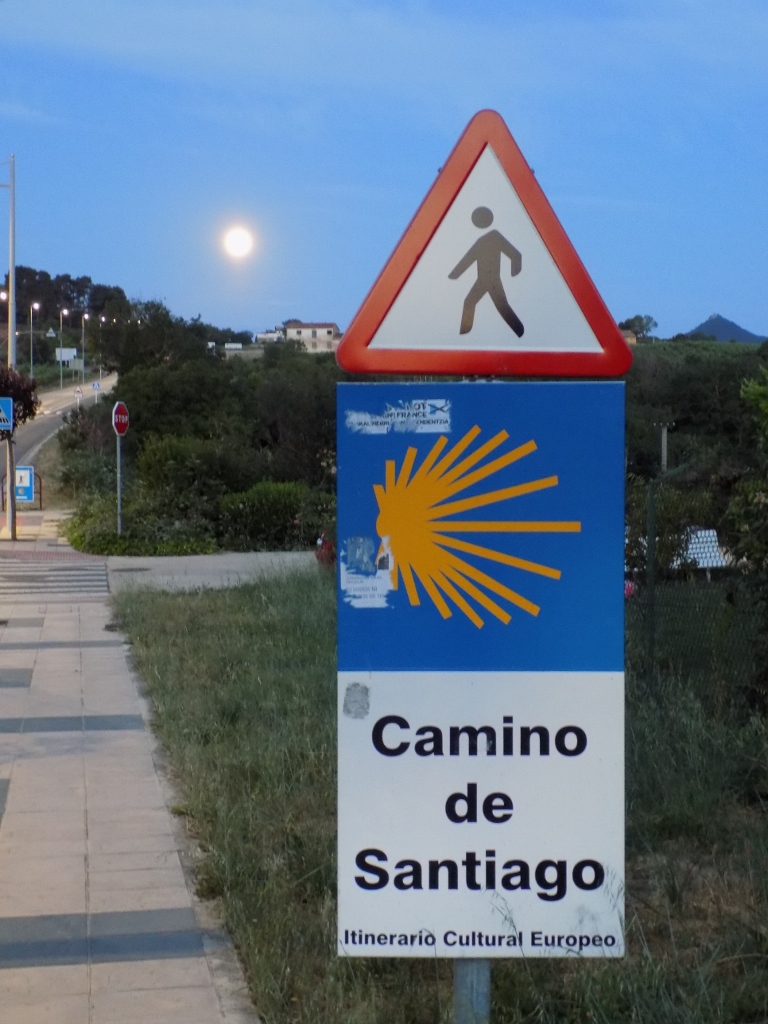 Full moon in Ayegui
Full moon in Ayegui
In this section, it is possible to walk a little bit around and yet still to be on the Way in order to pass by the nearby Monastery Irache where there is a drinking fountain, but before the monastery itself, the Way passes by another, very interesting fountain – Irache Fountain. This is a wine fountain. Some local wine producer wanted to treat tired pilgrims and thus he installed a fountain where one can get wine. It’s not as if the wine pours, rather it drips, but it was still sufficient to taste a couple of small gulps. After all, this is a question of symbolism and not an opportunity to get wasted. On the other hand, later, with heat and exhaustion, it is certainly good not to be immoderate with the wine tasting.
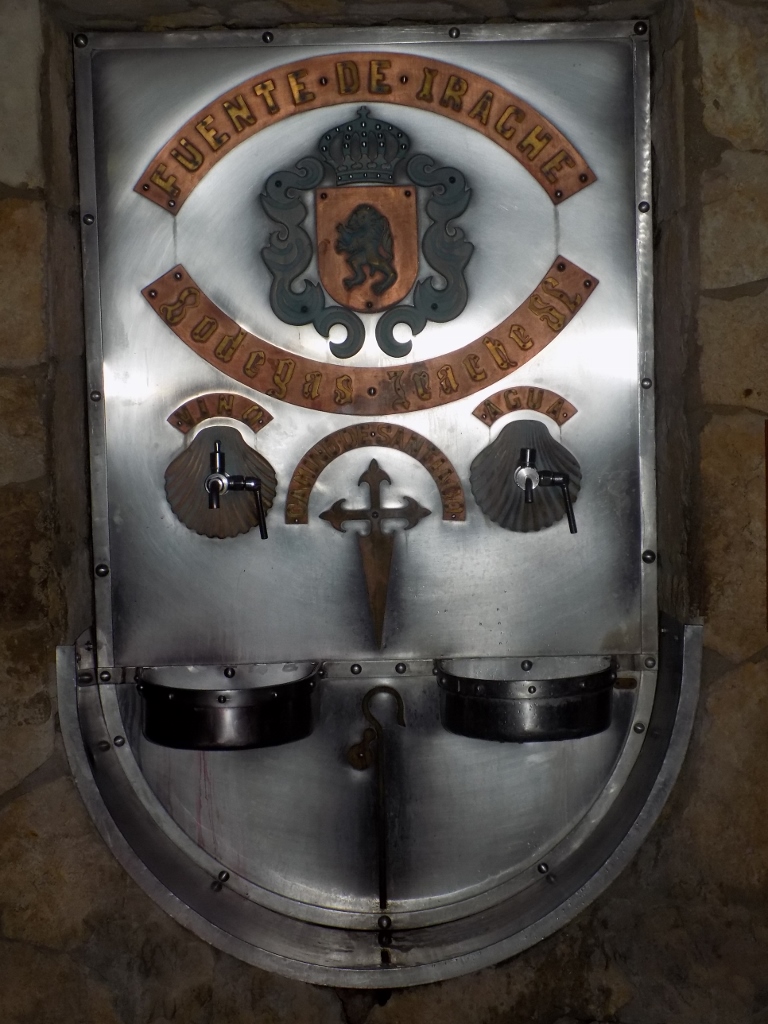 Wine fountain
Wine fountain
There is also a plaque that says: “Pilgrim! If you want to get to Santiago full of force and vitality, take a sip of this excellent wine and drink in the name of Happiness.”
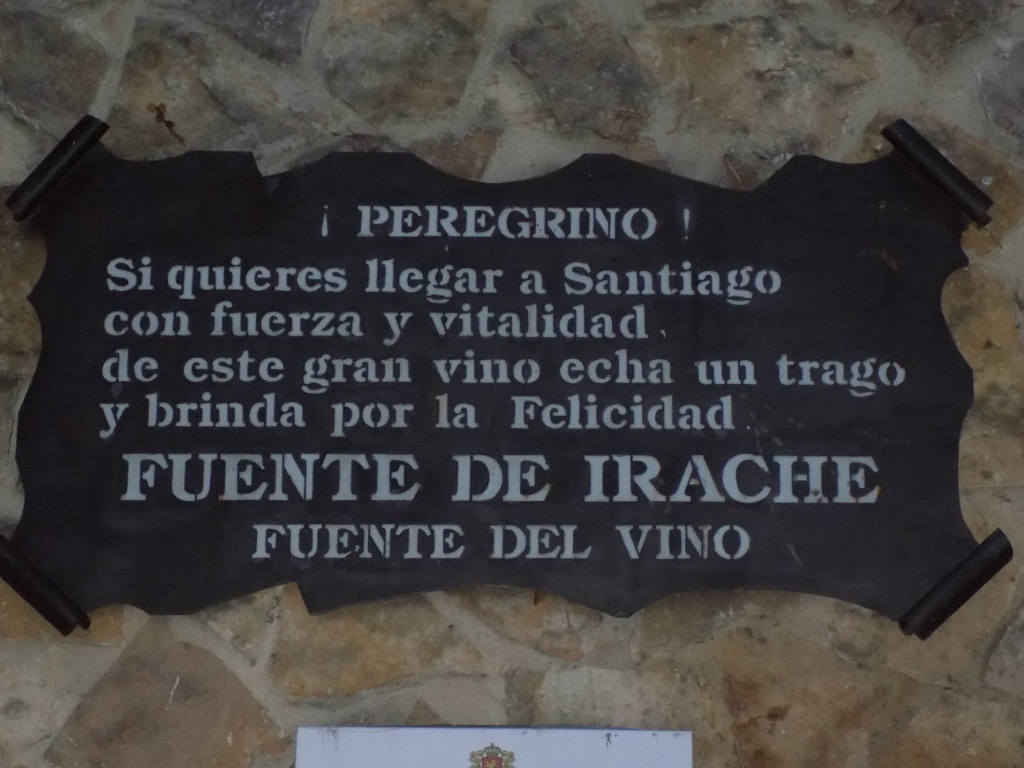 Wine fountain
Wine fountain
From there, the Way ascends mildly and after a while I could look back and enjoy the view at the sky in which the sun was starting to rise above the clouds that could be seen in the east.
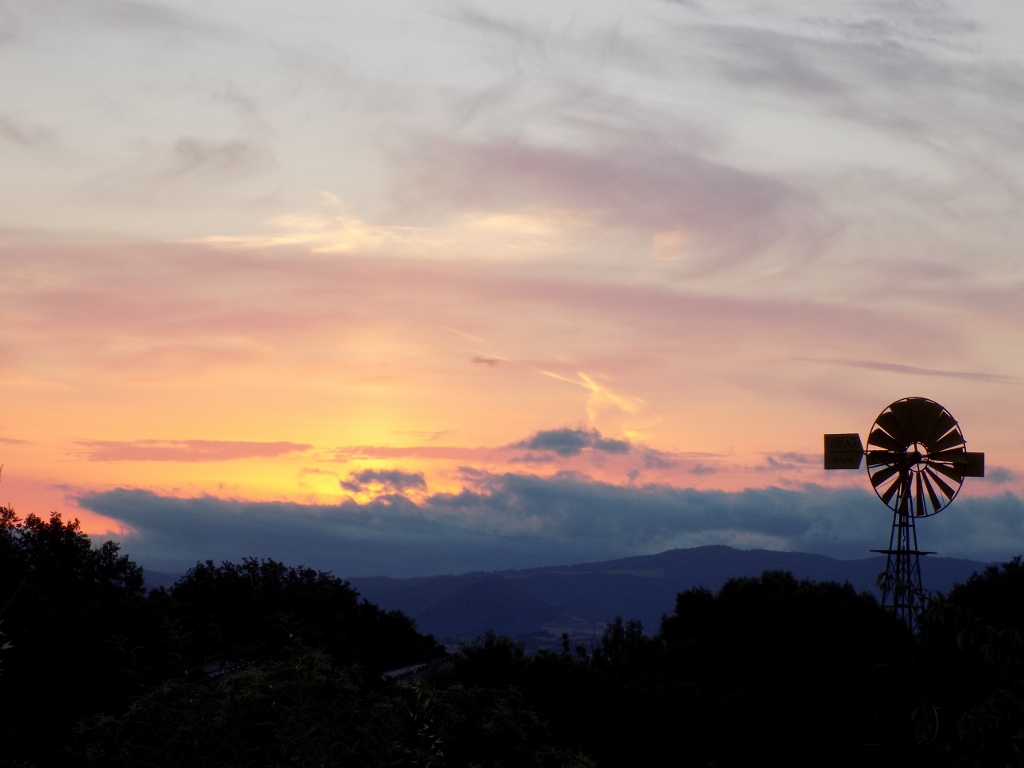 Morning after leaving Ayegui
Morning after leaving Ayegui
Soon I came across a point at which the Way forked in two. Both paths belong to the Way and eventually lead to the same place, but following slightly different routes. I decided to take the one recommended to me the night before by two English ladies. Namely, they told me that this version leads through a forest and it can be significantly more pleasant there, especially when the day advances and it becomes hot. On the other hand, that variant leads only through one inhabited place, as opposed to the other one that leads through three of them, making it easier to have more stops there. Still, the sign showed that the way through the forest was 1 km shorter, so I had no problems deciding which way to go.
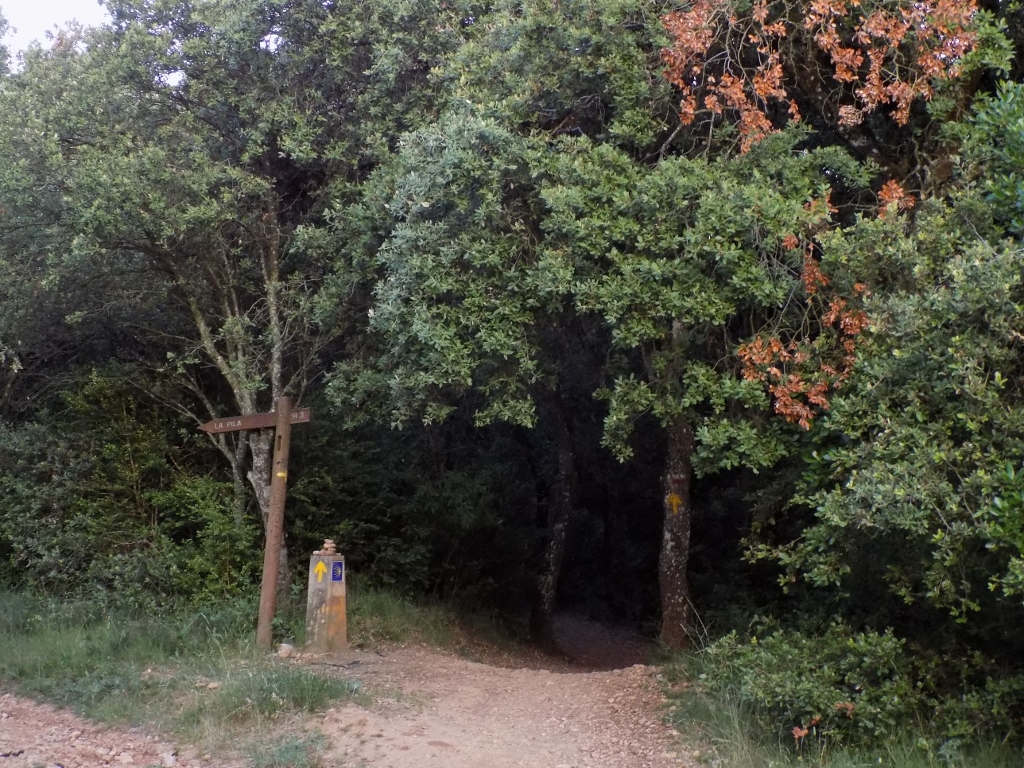 Entering the dark forest – just follow the yellow arrow
Entering the dark forest – just follow the yellow arrow
Although I felt a little rusty at the beginning of this morning, walking along the path that led uphill through this forest, soon I got to an elevation from which I had a spectacular view and in no time I started to feel better and relaxed, enjoying the landscapes around me.
 On the way to the village of Luquin
On the way to the village of Luquin
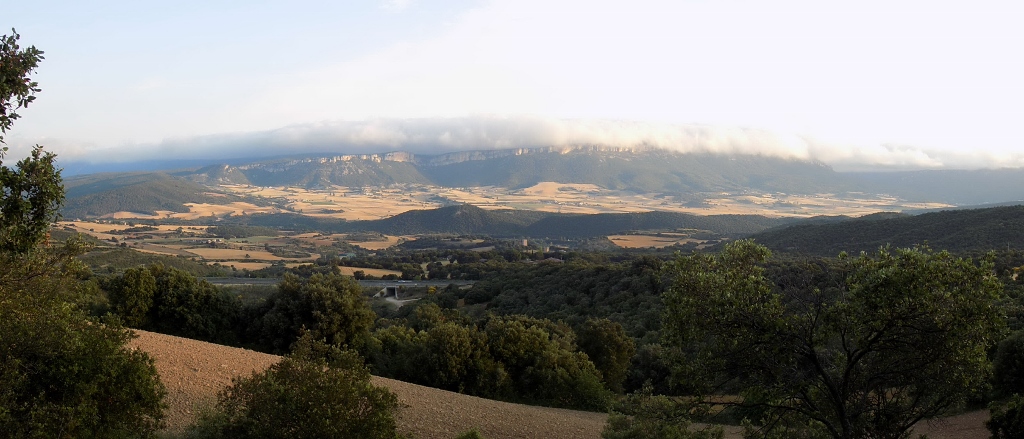 On the way to the village of Luquin
On the way to the village of Luquin
This day I changed my shoes – sending my hiking boots in the big backpack to the destination of the day, while wearing walking shoes. I felt very well, so much so that I even hummed to myself and when I came across a big flock of sheep that went in front of me I could not resist and I sang an old Serbian folk song about a shepherd herding sheep, which I filmed it as a joke to post for my friends.
At this point I slowed down and let the sheep go in front of me, but shortly after the local shepherd stopped the flock with the help of a couple of dogs and I could overpass them.
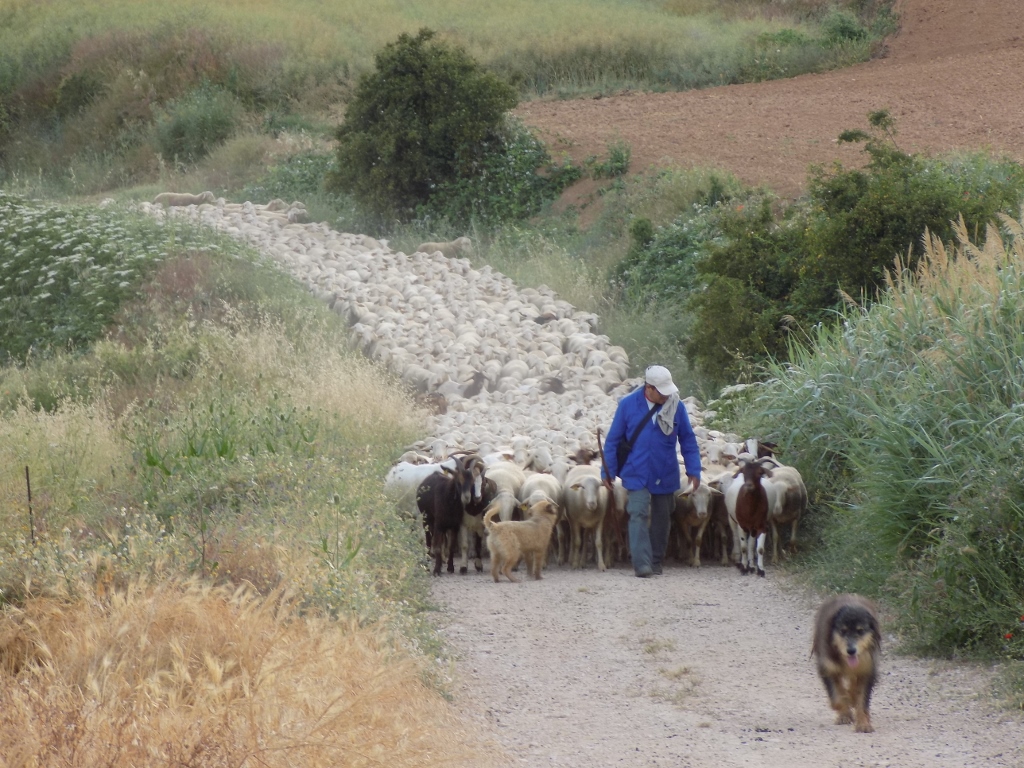 Flock of sheep led by the shepherd and dogs
Flock of sheep led by the shepherd and dogs
Soon I saw the village of Villamayor de Monjardín on the other side of the local motorway, but the Way led me to the village of Luquin where I stopped at a bar and took freshly squeezed orange juice. I also filled up my water bottle.
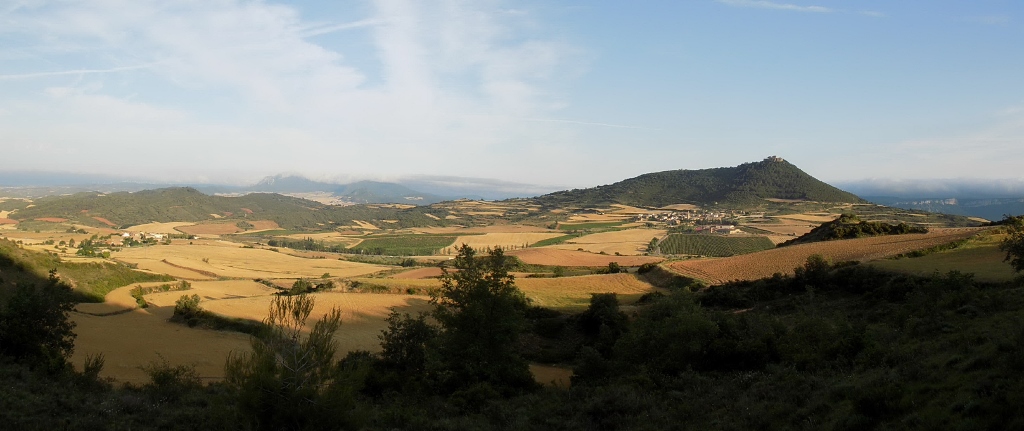 Villamayor de Monjardín at the foot of the forest-covered hill
Villamayor de Monjardín at the foot of the forest-covered hill